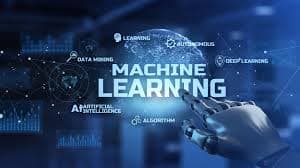BLOGS
Machine Learning (ML): The Core of Intelligent Systems

Partnering with Algatix offers a multitude
BLOGS

Machine Learning (ML) is a subset of Artificial Intelligence (AI) that enables systems to learn and improve from experience without being explicitly programmed. It involves training algorithms to identify patterns in data and make decisions or predictions based on new input.
Data: The foundation of ML, consisting of examples or observations.
Model: The mathematical representation that learns patterns from data.
Training: The process of feeding data to the model so it can learn.
Prediction: Using the trained model to generate outcomes from new data.
Data Collection
Gather labeled or unlabeled data depending on the task.
Data Preprocessing
Clean, normalize, and structure data for better learning.
Model Selection
Choose an appropriate algorithm based on the problem (e.g., classification, regression).
Training the Model
Use a dataset to teach the model how to find patterns.
Evaluation
Test model accuracy with a separate test set.
Deployment
Use the trained model in real-world applications.
Type | Description | Example Use Cases |
Supervised | Learns from labeled data | Spam detection, price prediction |
Unsupervised | Learns from unlabeled data | Customer segmentation, anomaly detection |
Reinforcement | Learns through trial-and-error interactions | Game AI, robotics, recommendation systems |
Semi-Supervised | Uses a mix of labeled and unlabeled data | Medical diagnosis with limited labels |
Linear Regression – Predicts continuous values
Logistic Regression – Classifies binary outcomes
Decision Trees – Breaks decisions into a tree structure
Support Vector Machines (SVM) – Maximizes class separation
K-Nearest Neighbors (KNN) – Classifies based on proximity to known points
K-Means Clustering – Groups similar data points
Principal Component Analysis (PCA) – Reduces dimensions while preserving structure
DBSCAN – Detects clusters with noise
Q-Learning – Learns value of actions in a state
Deep Q Networks (DQN) – Combines neural networks with Q-learning
Policy Gradient Methods – Learns optimal strategies directly
Predicting disease outbreaks
Diagnosing conditions via medical imaging
Customer churn prediction
Demand forecasting
Facial recognition systems
Voice-activated assistants
Language translation
Sentiment analysis in reviews or social media
Learns automatically from data
Reduces human intervention
Handles complex, high-dimensional datasets
Continuously improves over time with new data
Requires large, high-quality datasets
Susceptible to bias in training data
Model interpretability can be difficult (especially with deep learning)
Risk of overfitting or underfitting
Bias: Algorithms can reinforce existing social biases
Privacy: Risk of sensitive data exposure
Transparency: Decisions made by models should be explainable
Accountability: Determining responsibility for AI-driven decisions
Tool/Framework | Use Case |
Scikit-learn | Classical ML algorithms |
TensorFlow | Deep learning, neural networks |
PyTorch | Research-friendly deep learning |
Keras | High-level neural network API |
XGBoost | Gradient boosting for structured data |
Feature | Traditional Programming | Machine Learning |
Instructions | Explicitly written by humans | Learned from data |
Output | Deterministic and rule-based | Probabilistic and adaptive |
Flexibility | Hard to adapt to new data | Easily generalizes from data |
Use Cases | Static rule-based tasks | Dynamic data-driven tasks |
Accuracy
Precision
Recall
F1-Score
ROC-AUC
Mean Absolute Error (MAE)
Mean Squared Error (MSE)
Root Mean Squared Error (RMSE)
R² Score (Coefficient of Determination)
Integration with edge computing for faster local predictions
Responsible and explainable AI models
Multimodal learning (text, image, audio combined)
Continued growth in automation, robotics, and human-AI collaboration
Machine Learning is a powerful technology that forms the backbone of intelligent systems. By learning from data, ML models can make predictions, classify objects, and uncover insights that are often hidden to humans. Its potential is vast, but it requires responsible development, careful evaluation, and ethical consideration to harness its full power.
Organize, track, and collaborate on projects easily.
Organize, track, and collaborate on projects easily.
Organize, track, and collaborate on projects easily.
Organize, track, and collaborate on projects easily.
Organize, track, and collaborate on projects easily.
Organize, track, and collaborate on projects easily.
Organize, track, and collaborate on projects easily.






